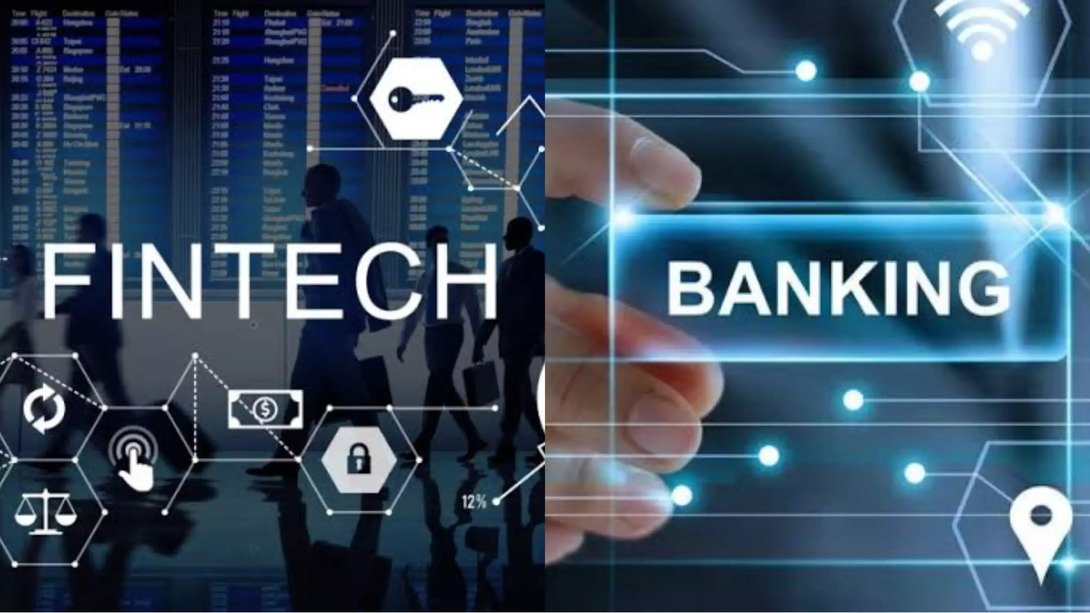
The fast-paced financial services industry is undergoing major changes. The previously traditional and often rigid relationship between banks and technology is transforming into a more creative and collaborative one. The synergy between banks and fintech startups is more than just a trend; it is a reconfiguration of the entire structure of the financial industry. These alliances have led to expansion and inclusion in the banking sector, improving the customer experience and breaking down historical barriers.
As technology advances and consumer demands increase, banks are leveraging fintech to increase speed, agility, and digital innovation. On the other hand, fintech companies can access financial opportunities, build a consumer base, and create a regulatory infrastructure. The ‘FinTech x Bank’ revolution—a collaborative model that sets new standards for the future of money—builds on this shared strength. Let’s take a look at how this joint effort will change the financial ecology of the world.
Understanding FinTech and Bank Collaboration:
FinTech is short for financial technology and is the next wave of digital innovation in the financial industry. Fintech companies have improved traditional banking by offering faster, cheaper, and more consumer-friendly alternatives, from mobile payments and digital wallets to blockchain and robo-advisors. The fintech sector has been transforming recently, posing a challenge for large banks. But now things are changing, and it’s more about collaboration. Banks are welcoming these fintech companies to improve their services because they see the benefits of the technology. Instead of developing everything themselves, banks want to partner with agile fintech companies that specialize in delivering specific financial solutions. These alliances allow banks to quickly update their systems and meet growing consumer expectations without bearing the full costs or risks of innovation.
Fintech Cases in Banking:
Traditional banks face many challenges in the digital age. Legacy systems, outdated user interfaces, and slow innovation cycles make them less competitive than agile financial institutions. In addition, today’s average consumer expects actionable experiences, rapid payments, and customized services. Many banks find this difficult. Fintech companies are helping banks bridge this gap by applying advanced technologies such as artificial intelligence, machine learning, and data analytics to the banking sector.
Banks can connect fintech services to their systems via APIs (application programming interfaces) to provide consumers with a seamless digital experience. For example, banks can add fintech lending tools to their mobile apps to quickly and directly provide personal loans. This approach improves customer satisfaction and increases the bank’s revenue stream by eliminating the need for high development costs.
Banks’ Need for Fintech:
Fintechs may be creative, but they often lack the regulatory, financing, and consumer trust expertise that banks have built up over decades. Regulatory compliance is constantly changing and difficult in many countries and regions. Partnering with banks creates a safety net for fintech companies, allowing them to operate within existing licensing and regulatory frameworks. Banks also provide fintechs with access to a large and loyal customer base, allowing them to grow faster without expensive marketing efforts. In essence, banks provide fintechs with the legitimacy and resources that allow them to focus on what they do best: creating. For example, fintech payment systems often work with banks to settle transactions, ensuring compliance with international financial rules and regulations.
Best Practices of FinTech and Bank Collaboration:
Collaboration between banks and fintech companies is becoming increasingly common worldwide. JPMorgan Chase has partnered with US fintech companies to improve its digital banking services. JPMorgan Chase has acquired a stake in OnDeck, a fintech company focused on small business lending. This allows JPMorgan Chase to provide rapid digital loans to small businesses. BBVA, a well-known Spanish bank, has made several investments in European fintech companies through its venture capital arm. This puts BBVA at the forefront of creative ideas in the field of mobile banking. In Asia, Singapore’s DBS Bank has partnered with several fintech companies to improve its digital payment and cybersecurity systems. These alliances demonstrate that banks are actively embracing fintech expertise to remain competitive and relevant in a rapidly changing financial environment.
Compliance and Supervisory Functions:
Coordinating the supervisory environment is one of the greatest challenges in the interaction between FinTech and banks. Due to their high level of regulation, banks primarily follow the rules. When working with fintechs, they must ensure that all services comply with KYC, anti-money laundering (AML), and data protection regulations. This process requires ongoing risk assessments and thorough due diligence. Now, the authorities are starting to change. In some jurisdictions, regulatory sandboxes have been set up so that fintechs can test new products in a controlled environment before fully implementing them. By working together, banks and fintechs can ensure that creativity does not come at the expense of safety or regulatory compliance. Fintech is also helping banks improve risk management in the regulatory technology (regtech) space through AI-driven compliance tools and automation.
How Consumers Benefit from Fintech-Bank Collaborations:
These alliances are consumer-centric. Fintechs are working with banks to provide end users with more efficient, customized, and intuitive financial services. Digital banking systems have become easier to use, loan applications are approved faster, and investment instruments have become smarter. Banks can proactively send notifications to help consumers better manage their money, offer immediate feedback about their spending, and use fintech-driven analytics to provide targeted financial advice. Digital channels provide financial services to underserved populations, such as those without or with limited access to banking services, thereby promoting financial inclusion. All the inventions that emerged from these alliances were peer-to-peer payments, digital wallets, and microcredit. The result is a more democratized financial system, where more people can take control of their finances.
Difficulties and Risks of the FinTech x Bank Model:
While the fintech banking model has many advantages, it also has some challenges. Cultural differences can create conflicts. While fintech is all about speed and innovation, banks remain risk-averse and bureaucratic. It can be challenging for them to set up their operating systems. Sharing data is another issue. Fintech alliances sometimes involve the transfer of private consumer data, which can raise privacy and security concerns. Poor management of these risks can lead to fines and loss of consumer trust. Some fintechs also become overly dependent on banks, limiting their creativity and autonomy. Therefore, both parties must establish clear contracts, openness, and shared goals. Partnerships based on mutual respect, strategic alignment, and a shared vision of the future of finance are the most successful.
Future Banking Partnerships and Fintech:
In the future, collaboration between banks and fintechs is likely to increase. Open banking projects are gaining popularity globally, as they require banks to share customer data with external companies via secure APIs. This opens up new opportunities for fintechs to offer services outside the traditional banking system. Another growing trend is embedded finance, where financial services are integrated directly into non-financial platforms such as ride-hailing apps and e-commerce sites. In this way, banks and fintechs are working behind the scenes to create a frictionless user experience. Moreover, the need for strong alliances will only increase as technologies such as blockchain, decentralized finance (DeFi), and digital currencies develop. While fintechs need the scale and trust of banks, banks will continue to rely on them for agility in the future. Together, they are not only changing the way financial institutions operate, but they are also defining their future.
Conclusion:
The competition between banks and fintechs is ushering in a new era of collaboration. What began as a disruptive movement has evolved into a strategic partnership that benefits both parties—and more importantly, the consumers they serve. These alliances are making financial services more digital, inclusive, and personalized than ever before. The financial industry is combining the creativity of fintech with the stability and scale of banks to create new value and solve long-standing problems. To succeed, obstacles such as data protection, compliance, and cultural fit must be carefully navigated. If both parties are willing to work together, clarify goals, and commit to improving the customer experience, the future of finance will be brighter and better. The FinTech x Banking model is the future of global finance, not just a transition phase.
FAQs:
1. Why do banks often partner with fintechs?
Banks partner with fintechs to quickly implement innovative technologies, improve the customer experience, and stay competitive without completely changing their processes.
2. What benefits does the collaboration between FinTechs and banks bring to customers?
Consumers benefit from faster service, easier-to-use apps, tailored financial advice, and easier access to previously inaccessible financial instruments.
3. Do these alliances compromise the protection of consumer data?
Yes, but to ensure the security of consumer data, they need strict data-sharing agreements, legal compliance, and strong cybersecurity policies.
4. Is FinTech replacing banks?
No, FinTechs are generally complementary to banks, not a replacement. Banks not only provide infrastructure, regulations, and consumer trust, but also professional services.
5. What is open banking? How does it relate to the FinTech Banking Alliance?
Open banking allows banks to securely share consumer data with external companies. This process allows fintechs to develop new services and foster closer collaboration.





